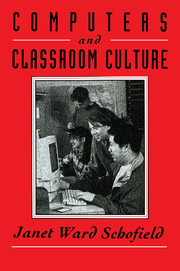Book contents
- Frontmatter
- Contents
- Acknowledgments
- 1 Introduction
- 2 The GPTutor: Artificial Intelligence in the Classroom
- 3 Computer Science 1: The Classroom and the Lab as Contrasting Learning Environments
- 4 Computers in the Closet: Attitudinal and Organizational Barriers to Computer Use in Classrooms
- 5 The Computer Room for Gifted Students: A (Bright, White Boys') Lunch Club
- 6 Girls and Computer Science: Fitting In, Fighting Back, and Fleeing
- 7 Computers, Classrooms, and Change
- Appendix
- References
- Author Index
- Subject Index
3 - Computer Science 1: The Classroom and the Lab as Contrasting Learning Environments
Published online by Cambridge University Press: 06 July 2010
- Frontmatter
- Contents
- Acknowledgments
- 1 Introduction
- 2 The GPTutor: Artificial Intelligence in the Classroom
- 3 Computer Science 1: The Classroom and the Lab as Contrasting Learning Environments
- 4 Computers in the Closet: Attitudinal and Organizational Barriers to Computer Use in Classrooms
- 5 The Computer Room for Gifted Students: A (Bright, White Boys') Lunch Club
- 6 Girls and Computer Science: Fitting In, Fighting Back, and Fleeing
- 7 Computers, Classrooms, and Change
- Appendix
- References
- Author Index
- Subject Index
Summary
Whitmore offered students a sequence of two classes devoted primarily to programming. The first of these classes, called Computer Science 1, introduced students to the BASIC programming language. In the second course, Computer Science 2, students continued their study of BASIC and were also introduced to PASCAL. A few students who were really interested in programming and who had performed well in Computer Science 2 were allowed to take a more advanced course called Computer Science 5, which consisted of participating in Computer Science 2 classes a second time in order to do more advanced projects. The kind of programming tasks students worked on are described later in this chapter. They ranged from programs to alphabetize lists or compute simple payrolls to those involving relatively complicated graphics and sound.
Computer science courses were quite popular at Whitmore, so that the computer science room and the adjacent lab were used for virtually every one of the seven class periods in the school day during both years of the study. Each year there were 5 or 6 Computer Science 1 classes and 1 Computer Science 2 class. The 11 Computer Science 1 classes taught during the 2 years of this study ranged in size from 8 to 20 students. The 2 Computer Science 2 classes had no more than a dozen students each. As described in more detail in the Appendix, weekly observations were conducted during a 2-year period in the Computer Science 2 classes.
Information
- Type
- Chapter
- Information
- Computers and Classroom Culture , pp. 62 - 93Publisher: Cambridge University PressPrint publication year: 1995
